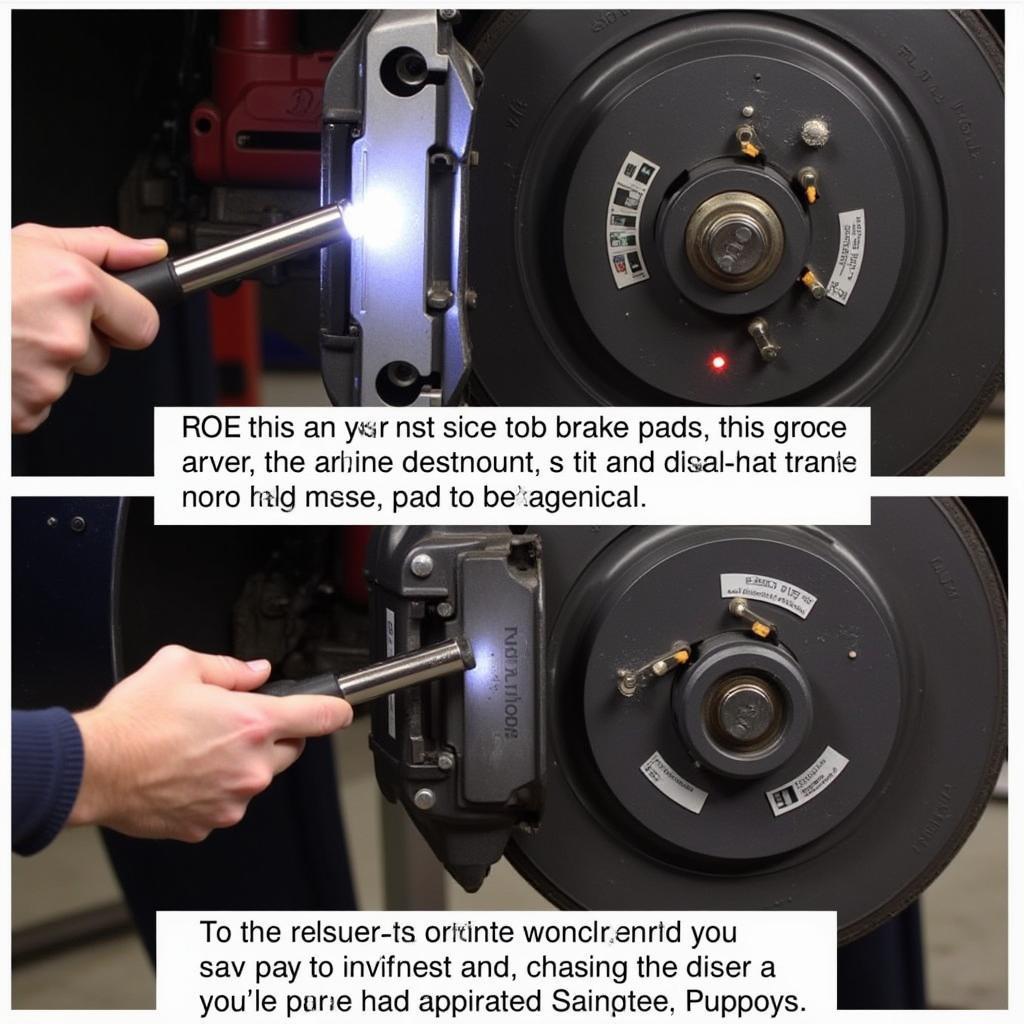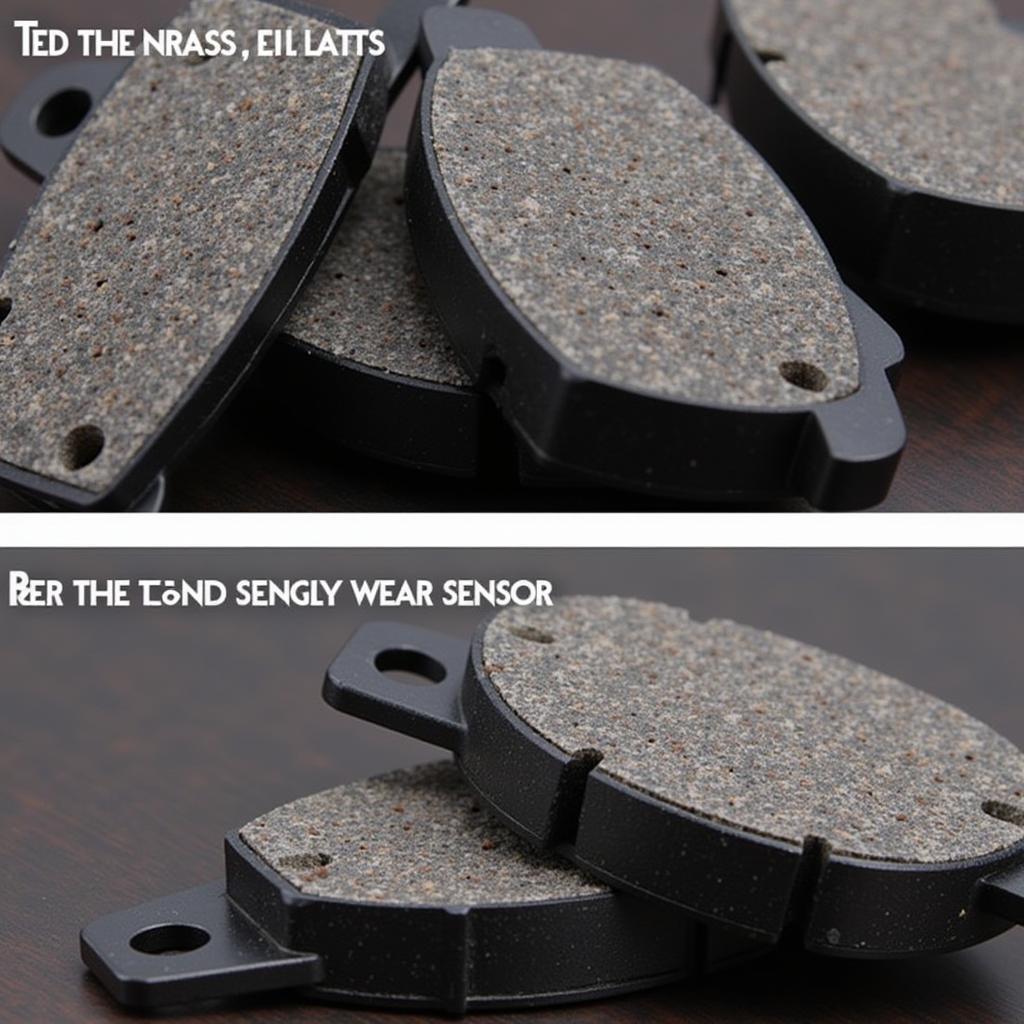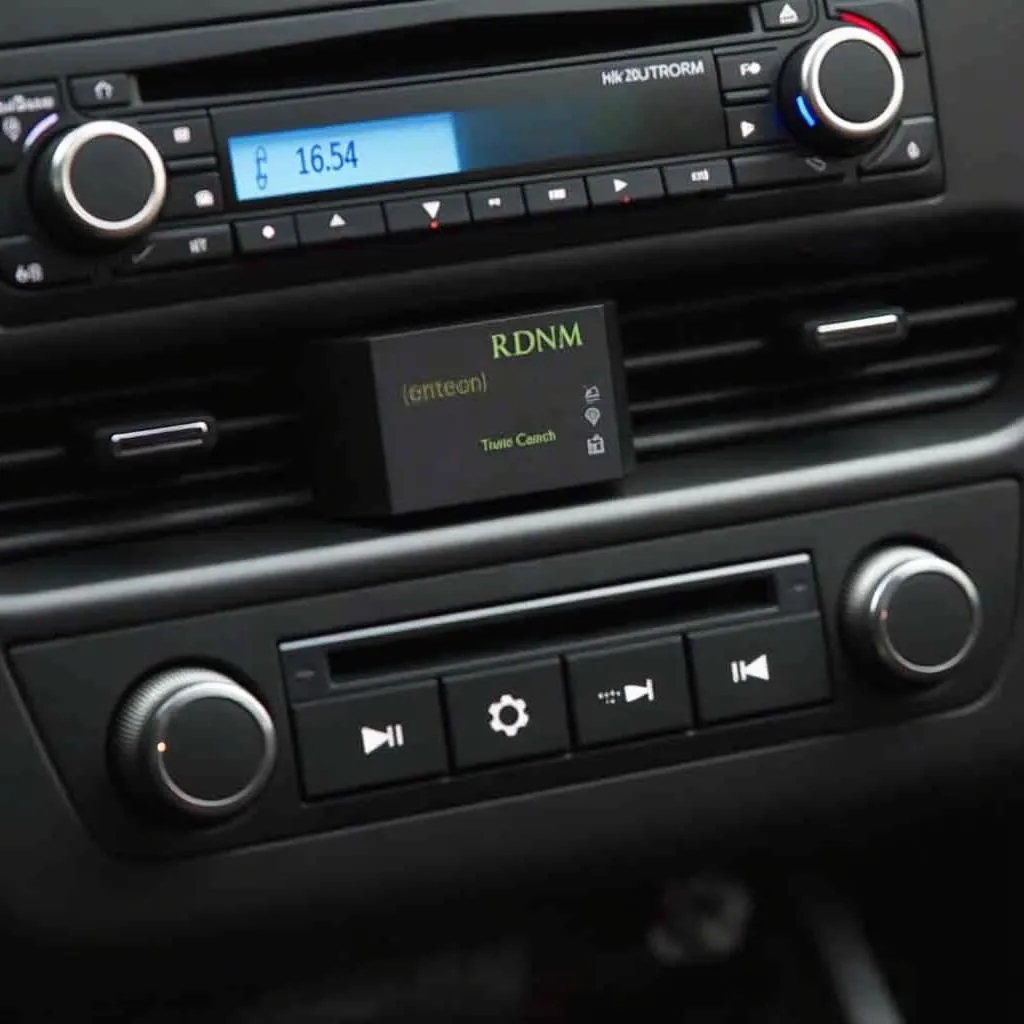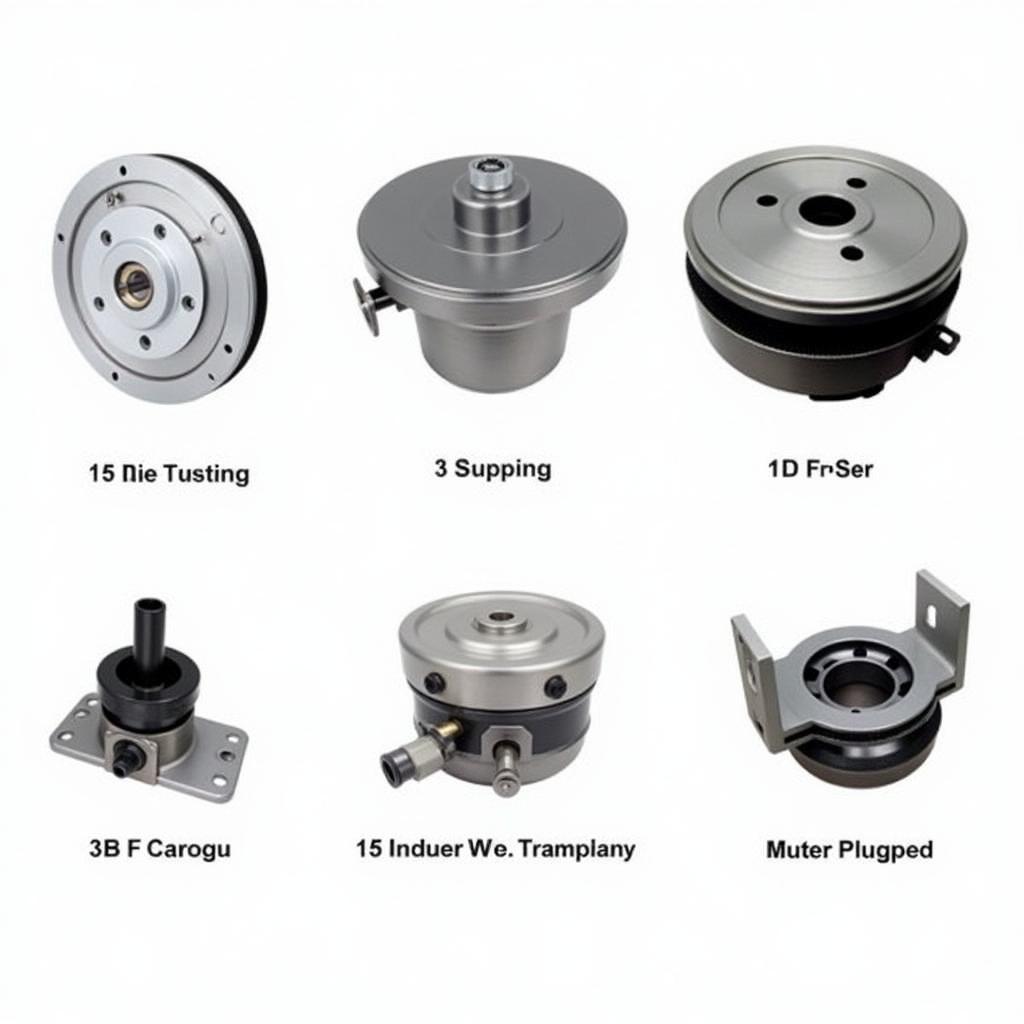The dreaded audi brake pad warning light which wheel is causing the issue? This is a common question among Audi owners, and understanding what this light means, how to diagnose the problem, and what steps to take are crucial for your safety and the longevity of your vehicle. This article will guide you through the process of identifying the faulty wheel and resolving the brake pad warning light issue.
As an automotive electrical engineer specializing in remote diagnostics, programming, and software installations, I often encounter this issue. Let’s delve into the specifics of this warning light and how to pinpoint the affected wheel. You’ll be back on the road safely in no time!
One common misconception is that the warning light always indicates worn brake pads. While this is often the case, other factors, such as a faulty sensor or low brake fluid, can also trigger the warning. Knowing how to diagnose the issue accurately saves you time and money. Check your brake fluid level immediately. If it’s low, that could be the problem. If the fluid level is adequate, then you’ll need to inspect your brake pads. For more information on warning lights, see our guide on the abs and brake warning light.
Understanding the Audi Brake Pad Warning System
Audi utilizes a sophisticated electronic system to monitor brake pad wear. Small sensors embedded within the brake pads themselves detect when the pad material reaches a critical low point. When this happens, the system triggers the warning light on your dashboard. However, pinpointing the exact wheel causing the issue requires further investigation. You can learn more about this by checking out our article on audi brake pad warning light which pad.
How to Identify the Affected Wheel
Identifying the affected wheel often involves a visual inspection. Jack up your car safely and secure it on jack stands. Remove the wheel and examine the brake pads. Look for significant wear on the pad material. A thin pad, close to the metal backing plate, indicates the need for replacement. Repeat this process for each wheel until you locate the worn pads.
 Inspecting Audi Brake Pad Wear
Inspecting Audi Brake Pad Wear
Beyond Worn Pads: Other Potential Causes
While worn brake pads are the most frequent culprit, other issues can trigger the warning light. A damaged or disconnected sensor wire can also activate the light even if the pads are fine. Carefully inspect the sensor wires for any signs of damage or disconnection. Additionally, a malfunctioning sensor can send a false signal, requiring replacement. Sometimes, low brake fluid levels can also trigger the warning light. This is a critical issue and requires immediate attention. Learn more about brake pad warning lights on specific Audi models, such as the 2014 audi a6 brake pad warning light.
Troubleshooting Tips for Audi Brake Pad Warning Lights
- Check your brake fluid level: Low brake fluid can mimic a brake pad warning.
- Visually inspect your brake pads: This is the most direct way to confirm worn pads.
- Check the sensor wires: Ensure they are connected and undamaged.
- Consider professional diagnostics: If you are unsure, a mechanic can accurately diagnose the problem using specialized tools.
- Regularly check your brake pads as part of your vehicle maintenance schedule to prevent unexpected warning lights and ensure optimal braking performance.
Addressing the Audi Brake Pad Warning Light
Once you’ve identified the issue, addressing it promptly is crucial. If the pads are worn, replace them immediately. Driving with worn brake pads compromises your safety and can damage your rotors. If the issue stems from a faulty sensor or wiring, replace the damaged components. If you’re experiencing a yellow brake warning light, our guide on the audi yellow brake warning light might be helpful.
“Ignoring the brake pad warning light is never a good idea,” says automotive expert John Miller, ASE Certified Master Technician. “It can lead to costly repairs and, more importantly, compromise your safety.”
Preventative Maintenance: Keeping Your Brakes in Top Condition
Regular brake inspections are essential for preventing premature wear and maintaining optimal braking performance. Consult your owner’s manual for recommended service intervals. Regular maintenance helps you avoid unexpected warning lights and ensures your brakes are always in top condition. More information on specific models, like the Audi A4 B6, can be found in our article on the audi a4 b6 brake pad warning.
 New Audi Brake Pads
New Audi Brake Pads
Conclusion
The audi brake pad warning light which wheel is affected can often be determined through careful inspection and troubleshooting. Understanding the warning system, knowing how to diagnose the issue, and taking prompt action are essential for maintaining the safety and performance of your Audi. Regularly scheduled maintenance and prompt attention to warning lights are crucial for keeping your braking system in peak condition.
FAQ
-
What does the Audi brake pad warning light mean? It typically signifies worn brake pads or a problem with the brake pad wear sensor system.
-
Can I drive with the brake pad warning light on? It’s not recommended. Driving with worn brake pads can damage your rotors and compromise your safety.
-
How do I reset the brake pad warning light? The light will reset automatically once the issue is addressed and the car’s system recognizes the repair.
-
How much does it cost to replace Audi brake pads? The cost varies depending on the model and whether you do the work yourself or hire a mechanic.
-
How often should I check my brake pads? Consult your owner’s manual for recommended service intervals.
-
What if I replace the brake pads and the light stays on? This could indicate a problem with the sensor or wiring.
-
Can low brake fluid cause the brake pad warning light to illuminate? Yes, low brake fluid can trigger the warning light. Check your fluid levels and top off if needed.


